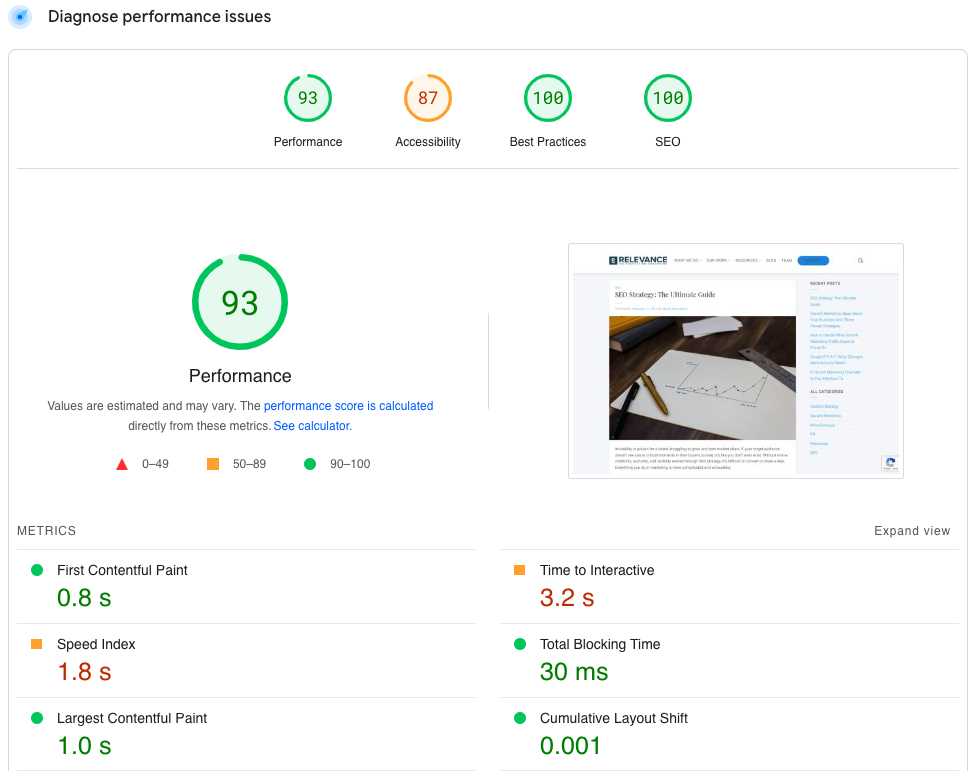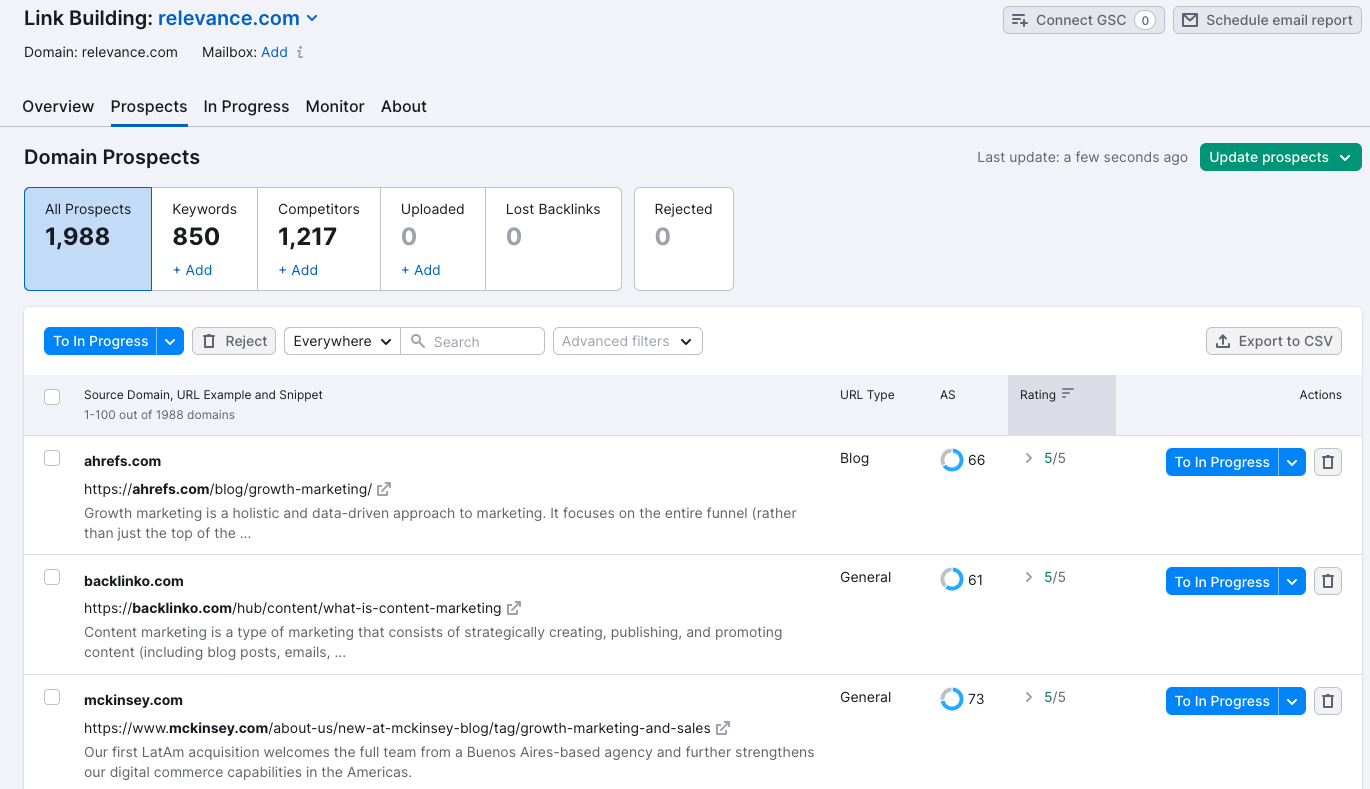Today, search engine algorithms are more sophisticated than ever. You’ve probably tried a few SEO tactics here and there. But were they part of an integrated SEO marketing strategy? Did you get the results you expected?
A solid SEO strategy is one of the best investments you can make in your brand. Nearly 70% of online experiences begin with search. As a marketer, if you don’t have a plan to become part of those experiences, you’re missing out on huge growth opportunities.
Here’s how to develop and execute one.
Search engine optimization is the practice of improving your website’s ranking and appearance on the search engine results page. But what is SEO marketing strategy’s meaning in the broader context of your marketing plan?
The importance of SEO strategy in digital marketing is that it complements paid traffic acquisition. Most companies have a mix of paid and organic traffic visiting their website. Paid traffic comes from advertising and sponsorships, and organic traffic comes from everywhere else.
Both traffic sources have their place, but organic traffic is often considered more valuable for a few reasons. First, you haven’t paid for organic traffic directly. You’ve earned it through your branding and content strategy efforts. Those efforts do require investing resources, but that investment pays dividends over time.
Organic traffic also tends to have a higher conversion rate, because those visitors are actively seeking out your content, products or services. For these reasons, SEO marketing is seen as a long-term investment in your brand that increases in value as you keep putting in the work.
It’s important to develop an SEO marketing strategy rather than taking an ad hoc approach. SEO is a holistic discipline - changes in one area will impact other areas. The more you can come at it with a multi-pronged methodology, the more your results with will multiply.
You could find an SEO strategy template online, but the best plan will be tailored to your market and organization. To develop and implement an SEO marketing strategy, it’s important to understand the different types of SEO and how they help you achieve your goals.
There are hundreds of SEO tactics you could include in your plan. Most of them fall into one of three main buckets:
Each of these types of SEO corresponds to an overarching strategy. Let’s dive into the definition of each, and some SEO marketing strategy examples.
SEO strategies are typically categorized based on where they take place. Technical optimizations take place on the backend of your website. Content strategy happens “on page” - that is, where users can see it. Finally, backlinks take place “off page,” which means somewhere other than your website. Here are some strategies of SEO to help start optimizing your website:
Technical SEO is the foundation on which the rest of your SEO strategy is built. It’s not sexy, but it holds up the rest of the metaphorical house. These optimizations might not be apparent in your content, but your readers will definitely notice them.
Wait. Technical optimizations? That sounds like a job for the web team, or even IT… right? Not quite. While you might partner with these internal teams on technical SEO, your perspective as the strategist is crucial.
You might not have the skillset to roll your sleeves up and improve that cumulative layout shift score. But your job is to understand each task, prioritize its importance, and advocate internally to get it done.
So, how can you tackle technical SEO? Because your website has so many moving pieces, we love a good checklist for technical SEO. A resource like this also helps you align with those internal teams if needed. Here are a few common first steps.

On-page SEO encompasses everything from your topic to keywords to embedded media. If technical SEO is the house’s foundation, on-page is everything inside it - from the furniture to the trendy wallpaper. And solid on-page SEO starts with a thoughtful, keyword-driven content strategy.
To get your content strategy rolling, follow these steps:
One framework to help make sure your content stands out as credible and valuable is E-E-A-T. Coined by Google in 2014, E-A-T stood for expertise, authoritativeness, and trustworthiness. In December 2022, Google announced the addition of another “E” to the framework: experience. E-E-A-T content exhibits:
Of course, you didn’t do all that keyword research for nothing. Each piece of content should also be optimized around a focus keyword. That means using the keyword and related terms throughout the body of the content. Try to anticipate and answer readers’ most common questions about the keyword.
Finally, put your technical SEO hat back on for a bit to make sure the focus keyword is naturally woven into these areas:
Executing a well-planned content strategy is an impressive feat. It takes hard and soft skills: creativity, intuition, quantitative analysis, and technical savvy. Accomplish this, and you’re more than halfway there.
Acquiring backlinks is part of your off-page SEO strategy. What are backlinks? Simply put, they’re links from external domains to your content. Search engine algorithms view backlinks as an indicator that other users find your content helpful.
The best way to earn backlinks that will help boost your content’s ranking is to ask for them. This might sound simple, but it requires a thoughtful plan to get the results you want.
So, sit down and create a plan to optimize your outreach efforts. Your backlink outreach plan should look something like this:
Some tools, like SEMRush, even have backlink builders you can use as a starting point.

Linking to your content from your own social channels is also an effective piece of your backlink strategy. You can use one 800-word piece of content to generate a whole slew of social media content. Listicle? Repurpose each list item as its own separate social post. Long-form educational piece? Each subhead topic can be its own post, and you can pull the most salient points out as quotation graphics.
Technology is advancing faster than ever, and marketing professionals are always at the forefront of new trends. In 2023, look for SEOs to shift their focus to:
There’s one thing that won’t change in 2023 or anytime soon, and that’s the heart and soul of SEO marketing strategy: user experience. A strategy built on understanding your audience and investing in insightful, high-quality content will never go out of style.
While testing new tactics is important, keep your focus on a technically-sound website, keyword-driven content, and relationship-based backlink plan. By building a solid foundation with these three SEO strategies, you can keep your content alive and well on page one of the SERP.